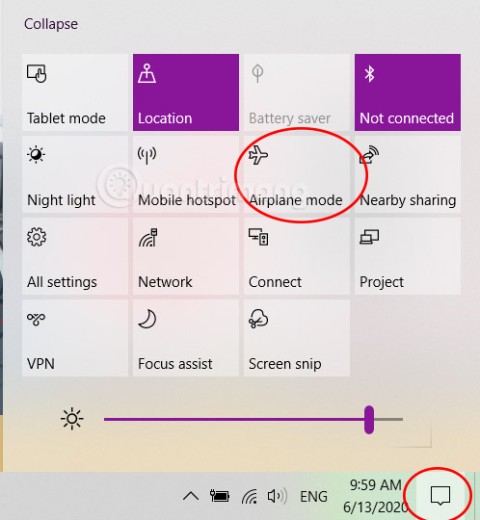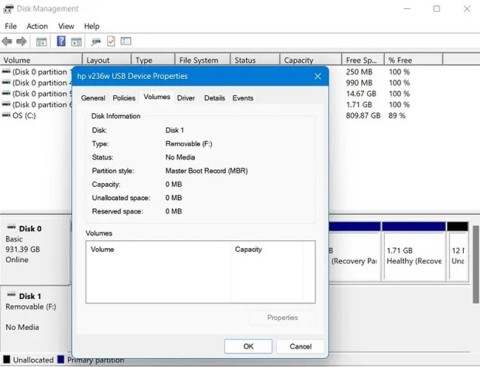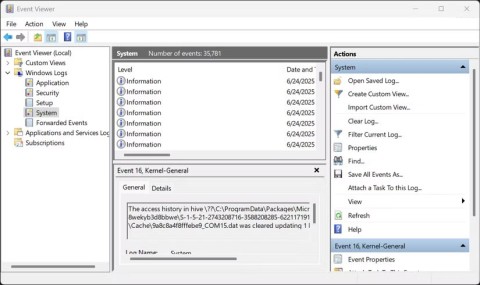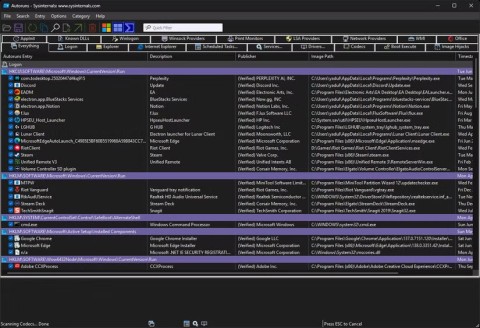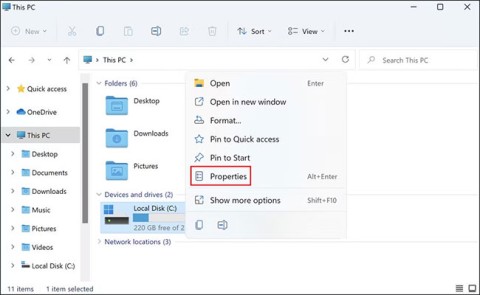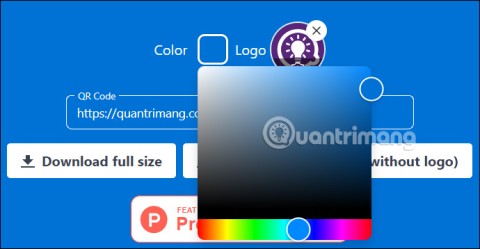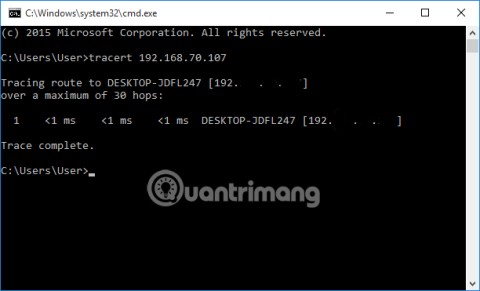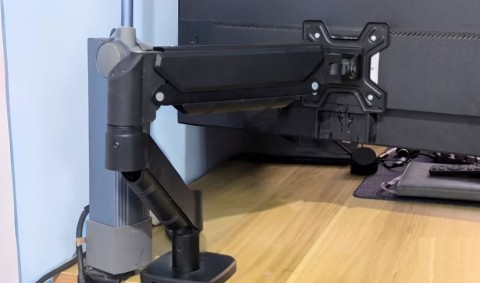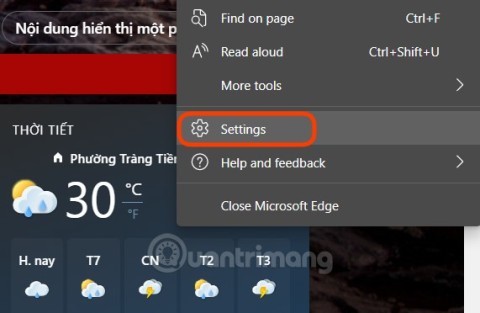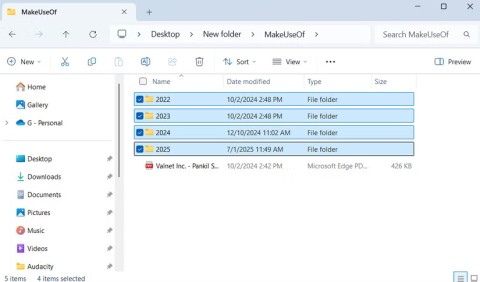Operating systems are the lifeline of any PC as, without them, it would become impossible to send emails, watch cat videos, or chat with our friends. But every once in a while, every operating system comes across problems like slow bootups, app crashes, glitchy display, wonky sound, and whatnot.
If you feel that your copy of Windows 11 has also been behaving oddly lately, we think it’s time to take matters into your own hands and repair Windows 11.
Now before you rush to the nearest PC repair tech, let’s take a look at the many methods available at your disposal that can help you repair a corrupted installation of Windows 11.
Contents
Method #1: Use a Windows Troubleshooter
Windows troubleshooters have come a long way and they can now fix most of your issues with a simple click. Most troubleshooting commands and checks that were normally carried out via CMD and PowerShell are now bundled within Troubleshooters which makes them much more usable when encountering issues. If you are still unable to fix and repair your Windows 11 installation, then the troubleshooter might be worth a shot. Use the guide below to get you started.
Press Windows + i on your keyboard to open the Settings app. Ensure ‘System’ is selected on your left and then click on ‘Troubleshoot’ on your right.
![Како поправити Виндовс 11 [15 начина] Како поправити Виндовс 11 [15 начина]](https://img2.webtech360.com/resources8/images31/image-6439-0105182722076.png)
Click on ‘Other Troubleshooters’.
![Како поправити Виндовс 11 [15 начина] Како поправити Виндов�� 11 [15 начина]](https://img2.webtech360.com/resources8/images31/image-405-0105182722143.png)
Now find the concerned troubleshooter for your current issue depending on the issue you are having with your installation. Click on ‘Run’ beside the troubleshooter.
![Како поправити Виндовс 11 [15 начина] Како поправити Виндовс 11 [15 начина]](https://img2.webtech360.com/resources8/images31/image-9440-0105182722204.png)
The troubleshooter will now do its thing and fix any issues it finds with the concerned component or feature.
![Како поправити Виндовс 11 [15 начина] Како поправити Виндовс 11 [15 начина]](https://img2.webtech360.com/resources8/images31/image-9235-0105182955896.png)
Method #2: Uninstall and re-install all recent Windows updates
If you are facing random crashes, slow performance, jitters, or bugs out of the blue after a recent Windows update then you can try uninstalling recent updates to solve your issue. These updates should be reverted with a system restore using the guide at the top but in case you don’t have a restore point then you can use the guide below to manually uninstall Windows Updates from your Windows 11 system.
Press Windows + i on your keyboard to open the Settings app. Now click on Windows Update on your left.
![Како поправити Виндовс 11 [15 начина] Како поправити Виндовс 11 [15 начина]](https://img2.webtech360.com/resources8/images31/image-6752-0105182955965.png)
Click on ‘Update History’.
![Како поправити Виндовс 11 [15 начина] Како поправити Виндовс 11 [15 начина]](https://img2.webtech360.com/resources8/images31/image-9408-0105182722517.png)
Scroll to the bottom and click on ‘Uninstall Updates’.
![Како поправити Виндовс 11 [15 начина] Како поправити Виндовс 11 [15 начина]](https://img2.webtech360.com/resources8/images31/image-1959-0105182722745.png)
You will now be taken to the control panel where you will get a list of all the recent major updates installed on your system. You won’t get security updates listed in this list as they can not be uninstalled for security reasons. Click and select the update you wish to uninstall.
![Како поправити Виндовс 11 [15 начина] Како поправити Виндовс 11 [15 начина]](https://img2.webtech360.com/resources8/images31/image-3028-0105182722836.png)
Now click on ‘Uninstall’ at the top.
![Како поправити Виндовс 11 [15 начина] Како поправити Виндовс 11 [15 начина]](https://img2.webtech360.com/resources8/images31/image-2165-0105182722899.png)
Note: If you do not get the Uninstall option then it is likely because you are trying to uninstall a vital Windows component that would break the functionality of your current installation.
Click on ‘Yes’ to confirm your choice.
![Како поправити Виндовс 11 [15 начина] Како поправити Виндовс 11 [15 начина]](https://img2.webtech360.com/resources8/images31/image-9581-0105182722985.png)
The selected update will now be uninstalled from your system. We recommend you restart your system and check if the issue that you were facing has been fixed. If not, continue uninstalling Windows Updates until you find the culprit.
Method #3: Restoring to an older System Restore Point
Note: This method assumes that you have a functional copy of Windows 11 that you can boot into.
You can think of System Restore Points as pathways to restore your system to an earlier state of Windows (when the Restore Point was created) along with the apps and settings that your PC had back then.
Windows 11 automatically creates system restore points at regular intervals. If you want to, you can also create restore points.
They’re also created when a new application or a Windows update is installed.
Here’s how you can try to repair Windows 11 using restore points.
Open the ‘Start’ menu and type in “Create a restore point”. Then click on the option shown below.
![Како поправити Виндовс 11 [15 начина] Како поправити Виндовс 11 [15 начина]](https://img2.webtech360.com/resources8/images31/image-7098-0105182723056.png)
A popup menu should now be open with the title ‘System Properties’ and you should be able to see System Restore related options as shown below.
![Како поправити Виндовс 11 [15 начина] Како поправити Виндовс 11 [15 начина]](https://img2.webtech360.com/resources8/images31/image-1063-0105182723121.png)
If your popup menu looks identical to ours with ‘Protection’ turned off for all your drives, we have bad news for you. Due to the lack of previous system restore points, there’s no point in proceeding further with this method as there isn’t any restore point to roll back to.
At this point, we recommend trying out the next method.
Tip: If you’re reading this just to see how things work, we suggest you turn on protection for your system drive (highlighted below), the one that contains Windows 11, and create a restore point right now.
![Како поправити Виндовс 11 [15 начина] Како поправити Виндовс 11 [15 начина]](https://img2.webtech360.com/resources8/images31/image-2132-0105182723214.png)
Here’s how you can do it.
Select the drive labeled ‘System’ and click on ‘Configure’.
![Како поправити Виндовс 11 [15 начина] Како поправити Виндовс 11 [15 начина]](https://img2.webtech360.com/resources8/images31/image-6753-0105182723323.png)
Then click on ‘Turn on System Protection’ button, and allocate some space for system restore points by moving the slider below. We have allocated a mere 4% of our system drive, which is close to 4.5GB.
Should the restore points increase in number or size, older ones would be automatically deleted to make room for new ones.
Click on ‘Apply’ and then ‘OK’.
![Како поправити Виндовс 11 [15 начина] Како поправити Виндовс 11 [15 начина]](https://img2.webtech360.com/resources8/images31/image-2650-0105182723417.png)
The drive you selected earlier should now have ‘Protection’ turned on, and you should now be able to create system restore points.
![Како поправити Виндовс 11 [15 начина] Како поправити Виндовс 11 [15 начина]](https://img2.webtech360.com/resources8/images31/image-3719-0105182723520.png)
While you’re on the same popup menu, click on the ‘Create’ button to create your PC’s first ever System Restore Point.
![Како поправити Виндовс 11 [15 начина] Како поправити Виндовс 11 [15 начина]](https://img2.webtech360.com/resources8/images31/image-7789-0105182723725.png)
There should now be a popup asking for your restore point’s name, feel free to type in anything you want. For your convenience, your PC’s current system time and data are automatically added to make this restore point distinguishable from others. For now, we’re typing “Fresh Install” as we recently re-installed Windows 11.
Once done, click on ‘Create’.
![Како поправити Виндовс 11 [15 начина] Како поправити Виндовс 11 [15 начина]](https://img2.webtech360.com/resources8/images31/image-2823-0105182723892.png)
After a short while, your restore point should be ready. You should now be able to check it by clicking the ‘System Restore’ button.
![Како поправити Виндовс 11 [15 начина] Како поправити Виндовс 11 [15 начина]](https://img2.webtech360.com/resources8/images31/image-7821-0105182956057.png)
Click on Next.
![Како поправити Виндовс 11 [15 начина] Како поправити Виндовс 11 [15 начина]](https://img2.webtech360.com/resources8/images31/image-7756-0105182724049.png)
And your newly created system restore point should be here.
![Како поправити Виндовс 11 [15 начина] Како поправити Виндовс 11 [15 начина]](https://img2.webtech360.com/resources8/images31/image-6893-0105182724113.png)
Selecting the restore point and clicking the (then enabled) ‘Next’ button should take you through restoring your PC to the moment the restore point was created.
Method #4: Using SFC command prompt tool
System File Checker (SFC) and Deployment Image Servicing and Management (DISM) are two command-line tools that are more commonly used by the IT techs in corporations to service Windows machines.
If this is the first time you’ve heard about these tools, then there’s nothing to worry about, as these are generally considered power tools and not a lot of people know about them.
Let’s start with SFC first and see how you can repair Windows 11.
SFC can be used to scan and verify protected files (Windows Files). If it finds that a file has been damaged and cannot be verified, it attempts to restore a fresh copy from the below folder in your PC.
C:\Windows
Here’s how you can give this option a try.
Click the ‘Start’ button, type in “command prompt”, and make sure to run the app as Administrator, as highlighted below.
![Како поправити Виндовс 11 [15 начина] Како поправити Виндовс 11 [15 начина]](https://img2.webtech360.com/resources8/images31/image-8890-0105182956148.png)
Once in Command Prompt, type in the following command or simply copy and paste it. Then hit ‘Enter’.
sfc /scannow
The above command starts a scan instantly, which roughly takes a few minutes for a complete check.
![Како поправити Виндовс 11 [15 начина] Како поправити Виндовс 11 [15 начина]](https://img2.webtech360.com/resources8/images31/image-4377-0105182724504.png)
If the scan finds that all your files are in good shape, it’ll be shown as below.
![Како поправити Виндовс 11 [15 начина] Како поправити Виндовс 11 [15 начина]](https://img2.webtech360.com/resources8/images31/image-5446-0105182724592.png)
But if there are some damaged Windows files on your PC, SFC should be able to fix them with a fresh copy.
Method #5: Using DISM command prompt tool
DISM is another command-line tool that is far more powerful than SFC. It can work with multiple types of Windows 11 images in both .wim and .esd formats, manage drivers before deploying images to PCs and so much more.
Let’s take a look at how you can use DISM to repair Windows 11.
Open Command Prompt as Administrator using the steps we just mentioned for SFC.
Then paste the below command to scan your Windows 11 installation for errors and press Enter.
Dism /Online /Cleanup-Image /ScanHealth
You should see something like this.
![Како поправити Виндовс 11 [15 начина] Како поправити Виндовс 11 [15 начина]](https://img2.webtech360.com/resources8/images31/image-5068-0105182725172.png)
Once finished, the tool should report its findings. Here’s how our screen looks like.
![Како поправити Виндовс 11 [15 начина] Како поправити Виндовс 11 [15 начина]](https://img2.webtech360.com/resources8/images31/image-9689-0105182725280.png)
Then run this command to see if any issues were detected and how repairable your problem is.
Dism /Online /Cleanup-Image /CheckHealth
As our PC was working fine, the above command reported zero issues. Yours may be different.
![Како поправити Виндовс 11 [15 начина] Како поправити Виндовс 11 [15 начина]](https://img2.webtech360.com/resources8/images31/image-3654-0105182725335.png)
If DISM reported issues with your PC, the next command you should run is mentioned below. Paste it and hit ‘Enter’.
DISM /Online /Cleanup-Image /RestoreHealth
The above command will request valid copies of corrupted files from Windows Update. Here’s how the command looks in action.
![Како поправити Виндовс 11 [15 начина] Како поправити Виндовс 11 [15 начина]](https://img2.webtech360.com/resources8/images31/image-7724-0105182725565.png)
And here’s how it looks once it’s done processing.
![Како поправити Виндовс 11 [15 начина] Како поправити Виндовс 11 [15 начина]](https://img2.webtech360.com/resources8/images31/image-9311-0105182725854.png)
All you need to do is reboot your PC.
If you consider yourself someone who understands command-line tools and their parameters, and would like to know more about SFC and DISM along with the range of parameters that can be used with them, here’s the complete documentation about SFC, and here’s the complete reference for DISM. Feast on the information!
Tip: If your Windows 11 processes crash often, restart a few seconds later and show an alert with a bunch of numbers and alphabets (aka error codes), we highly recommend putting them in a search engine like Google and understanding what they mean. This method of troubleshooting is extremely effective against specific errors and problems, and can often prove to be a lifesaver.
Method #6: Using Windows 11 Startup Repair
Windows 11 comes equipped with a built-in startup repair tool that is designed to detect and repair common startup problems you may be facing. Let’s take a look at how you can use Startup Repair to fix Windows 11.
Open the ‘Start’ menu and click on the ‘Power’ button.
![Како поправити Виндовс 11 [15 начина] Како поправити Виндовс 11 [15 начина]](https://img2.webtech360.com/resources8/images31/image-3277-0105182725914.png)
Hold the ‘Shift’ Key and click on ‘Restart’.
![Како поправити Виндовс 11 [15 начина] Како поправити Виндовс 11 [15 начина]](https://img2.webtech360.com/resources8/images31/image-794-0105182726004.png)
Your PC should boot into a blue screen with a bunch of options. Click on ‘Troubleshoot’.
![Како поправити Виндовс 11 [15 начина] Како поправити Виндовс 11 [15 начина]](https://img2.webtech360.com/resources8/images31/image-5932-0105182726311.jpg)
Click on ‘Advanced Options’.
![Како поправити Виндовс 11 [15 начина] Како поправити Виндовс 11 [15 начина]](https://img2.webtech360.com/resources8/images31/image-5382-0105182726417.jpg)
Click on ‘Startup Repair’.
Soon after, Windows should now be scanning and diagnosing your PC for any issues that may be preventing it from functioning properly. Let it work its magic and after some time, your copy of Windows 11 should be free of all the problems.
Tip: If ‘Startup Repair’ fails and you see the screen shown below, there could be two possible reasons for this. Either Windows 11 failed to identify the issues or there is simply no issue with your PC.
![Како поправити Виндовс 11 [15 начина] Како поправити Виндовс 11 [15 начина]](https://img2.webtech360.com/resources8/images31/image-4518-0105182726486.jpg)
At this point, you could try to follow method #3’s option 2 to initiate a repair of Windows 11. You could also try to reinstall Windows 11 by using the “Upgrade” option in Windows 11 setup, instead of going for a clean install and wiping your drive.
This install method should reinstall Windows 11 while keeping all your files, apps, and settings.
Method #7: Using Windows 11 installer ISO file
Did you know that the files you used to install Windows 11, could also be used to repair a damaged copy of Windows 11?
Not a lot of people know this but it can easily be done and doesn’t take too long at all.
To make this method work, you need access to Windows 11 installation files (ISO) or the installer USB drive you may have used earlier to install Windows 11.
Option 1: Using the setup file from the Windows 11 ISO
See if you have the Windows 11 ISO stored somewhere on your PC. If you do, perfect! No need to download anything.
In case you don’t have the Windows 11 ISO around, we suggest you follow this guide to download the latest available ISO.
Before proceeding, make sure you can boot into Windows 11 and access the ISO. If you can, let’s move to the next step.
Locate the Windows 11 ISO and double-click it.
![Како поправити Виндовс 11 [15 начина] Како поправити Виндовс 11 [15 начина]](https://img2.webtech360.com/resources8/images31/image-7519-0105182726601.png)
The ISO should now be mounted on a virtual disk drive on your Windows 11 PC and should look similar to this
![Како поправити Виндовс 11 [15 начина] Како поправити Виндовс 11 [15 начина]](https://img2.webtech360.com/resources8/images31/image-6969-0105182726712.png)
Double-click the virtual drive. Once inside, there should be a file named ‘setup’, double-click it.
![Како поправити Виндовс 11 [15 начина] Како поправити Виндовс 11 [15 начина]](https://img2.webtech360.com/resources8/images31/image-4486-0105182726796.png)
Tip: Alternatively, you can also extract the ISO somewhere on your pc, which of course would take a bit of time but should give you the same result.
Wait for the Windows 11 setup to start. Once done, you should see a screen similar to below. Click on ‘Next’.
![Како поправити Виндовс 11 [15 начина] Како поправити Виндовс 11 [15 начина]](https://img2.webtech360.com/resources8/images31/image-3622-0105182726853.png)
Accept the Terms & Conditions.
![Како поправити Виндовс 11 [15 начина] Како поправити Виндовс 11 [15 начина]](https://img2.webtech360.com/resources8/images31/image-4691-0105182726957.png)
Choose the option that best suits you here and click ‘Next’. We would like to keep our files, hence we’ve chosen ‘Keep personal files and apps’.
![Како поправити Виндовс 11 [15 начина] Како поправити Виндовс 11 [15 начина]](https://img2.webtech360.com/resources8/images31/image-4141-0105182727056.png)
Click on ‘Install’ to start the installation.
![Како поправити Виндовс 11 [15 начина] Како поправити Виндовс 11 [15 начина]](https://img2.webtech360.com/resources8/images31/image-7142-0105182727192.png)
After a few seconds, setup should start preparing your PC for an in-place upgrade, which will repair and refresh all the files needed to run Windows 11 on your PC.
![Како поправити Виндовс 11 [15 начина] Како поправити Виндовс 11 [15 начина]](https://img2.webtech360.com/resources8/images31/image-4659-0105182727255.png)
Your PC may reboot a few times to complete the repair.
Once setup has finished, your copy of Windows 11 should be completely repaired and ready to use.
Option 2: Using a bootable USB drive
If for some reason, your PC fails to boot into Windows 11 or simply reboots repeatedly due to a corrupt Windows file, then this option will be perfect for you.
Before we start, see if you still have the Windows 11 USB install stick you may have used to install Windows 11 on your PC. If you do, then there’s nothing to worry about.
In case you don’t, here’s how you can create a Windows 11 USB installer within a couple of minutes. Do keep in mind that it requires another functional PC with internet to download Rufus and Windows 11 ISO. Simply connect the USB drive to your PC and restart your system. Press any key on your keyboard when prompted to boot from the recovery media and subsequently proceed to repair Windows with the on-screen instructions. You will have the option to reinstall Windows, fix missing files, fix boot order or even use CMD to perform your own checks. If you need any help, then you can this guide to reset Windows from within your recovery media setup and more.
Check this guide: How To Install Windows 11 From USB
Method #8: Repair or Fix Drivers
Many times you can face issues with your Windows installation due to incompatible, outdated, or conflicting drivers installed on your system. Drivers are essential programs that allow your components to communicate with your CPU and GPU for the proper functioning of your system. Having incompatible or conflicting drivers can cause issues with Windows and even take a significant impact on your performance. If some of your components seem to be misbehaving or you feel that your system is drastically slower than expected then it would be a good idea to check your drivers and perform any repairs if needed.
1. Check for conflicting or outdated drivers
Let’s check for conflicting or outdated drivers on your system. Windows automatically shows you a warning sign for misbehaving components or outdated drivers in Device Manager. Use the guide below to look for driver issues on your installation of Windows 11.
Press Windows + X on your keyboard and click on Device Manager.
![Како поправити Виндовс 11 [15 начина] Како поправити Виндовс 11 [15 начина]](https://img2.webtech360.com/resources8/images31/image-5728-0105182727364.png)
Look for components in the list with a warning side beside them. If any are found, use the methods below to troubleshoot driver issues on your system. However, if none are found then let’s check for new components on your system to identify misbehaving components.
Click on the ‘Scan for hardware changes’ button at the top of your screen.
![Како поправити Виндовс 11 [15 начина] Како поправити Виндовс 11 [15 начина]](https://img2.webtech360.com/resources8/images31/image-5177-0105182727469.png)
Windows will now scan for hardware changes and install any new components or drivers found on your PC.
![Како поправити Виндовс 11 [15 начина] Како поправити Виндовс 11 [15 начина]](https://img2.webtech360.com/resources8/images31/image-6246-0105182727564.png)
2. Fix driver issues
If you wish to fix driver issues on your system then you will need to reinstall drivers for the concerned component on your system. This can be done through Windows and manually as well. We recommend manually force removing drivers only if you are unable to remove the driver through Device Manager in Windows. Force removing the wrong drivers can cause serious issues on your system and even force you to reinstall Windows altogether. Hence, ensure that you identify and properly force remove drivers from your system only for the malfunctioning component. Use one of the guides below depending on your current needs and requirements.
Note: If you are using a laptop or a pre-built system then we recommend you download specific drivers for the concerned component from your OEM support side beforehand. This will allow you to install the necessary drivers easily once you have removed the malfunctioning driver.
Read: 6 Ways to Update Drivers on Windows 11
Option 1: Remove and reinstall a component through Device Manager
Press Windows + X on your keyboard and click on ‘Device Manager’.
![Како поправити Виндовс 11 [15 начина] Како поправити Виндовс 11 [15 начина]](https://img2.webtech360.com/resources8/images31/image-5728-0105182727364.png)
Right-click on the component for which you wish to remove the driver and select Properties.
![Како поправити Виндовс 11 [15 начина] Како поправити Виндовс 11 [15 начина]](https://img2.webtech360.com/resources8/images31/image-5695-0105182727667.png)
Now click and switch to the Driver tab at the top.
![Како поправити Виндовс 11 [15 начина] Како поправити Виндовс 11 [15 начина]](https://img2.webtech360.com/resources8/images31/image-3418-0105182727905.png)
Click on ‘Uninstall device’.
![Како поправити Виндовс 11 [15 начина] Како поправити Виндовс 11 [15 начина]](https://img2.webtech360.com/resources8/images31/image-2867-0105182728010.png)
Check the box for ‘Attempt to remove the driver for this device’.
![Како поправити Виндовс 11 [15 начина] Како поправити Виндовс 11 [15 начина]](https://img2.webtech360.com/resources8/images31/image-2316-0105182728120.png)
Finally, click on ‘Uninstall’.
![Како поправити Виндовс 11 [15 начина] Како поправити Виндовс 11 [15 начина]](https://img2.webtech360.com/resources8/images31/image-902-0105182728296.png)
The device driver will now be removed and the device will be uninstalled from your system. You will now be prompted to restart your device. Restart your device as soon as possible and then reinstall the concerned drivers from your OEM’s support site. If you do not have the concerned drivers on your OEM site, then simply scan for hardware changes using the guide above and the necessary drivers will be automatically installed on your system.
Option 2: Manually force remove a driver and reinstall it
You can also manually force remove a driver using a third-party utility. This is not recommended as if Windows is not allowing you to remove a driver then it is probably an essential component that could cause issues on your system. We recommend you properly identify the concerned drivers before removing them from your system. Additionally, you should keep the latest replacement drivers handy so that you can reinstall them as soon as possible. Use the guide below to manually force delete concerned drivers from your system.
We will be using Driver Store Explorer to manually force remove the concerned drivers from your system. Driver Store Explorer is an open-source utility used to identify and remove all the drivers installed on your system. It is hosted on GitHub and can be compiled natively too in case privacy is a concern.
Download Driver Store Explorer to your local storage using the link above. Extract the archive to a convenient location and then launch the app using Rapr.exe.
![Како поправити Виндовс 11 [15 начина] Како поправити Виндовс 11 [15 начина]](https://img2.webtech360.com/resources8/images31/image-3903-0105182728416.png)
Апликација ће се сада покренути и скенирати све управљачке програме инсталиране на вашем систему. Када се листа прикаже, можете је сортирати на основу различитих колона које су вам доступне. Препоручујемо вам да сортирате своје драјвере према „Добављачу“ јер ће вам то олакшати претрагу дотичног драјвера на основу произвођача. Кликните на Провајдер на врху да поређате све управљачке програме узлазно на основу имена њиховог провајдера.
![Како поправити Виндовс 11 [15 начина] Како поправити Виндовс 11 [15 начина]](https://img2.webtech360.com/resources8/images31/image-1420-0105182728498.png)
Померите листу и идентификујте дотичног возача. Када га пронађете, означите поље поред њега.
![Како поправити Виндовс 11 [15 начина] Како поправити Виндовс 11 [15 начина]](https://img2.webtech360.com/resources8/images31/image-2489-0105182728594.png)
Сада такође можете да кликнете на 'Селецт оид дриверс' са десне стране да аутоматски идентификујете и изаберете друге старе драјвере инсталиране на вашем систему. Међутим, не бисмо препоручили ово на унапред изграђеним системима и лаптоп рачунарима који понекад могу да добију погрешна ажурирања драјвера у будућности како уређај стари, што заузврат смањује укупне перформансе.
![Како поправити Виндовс 11 [15 начина] Како поправити Виндовс 11 [15 начина]](https://img2.webtech360.com/resources8/images31/image-3558-0105182728684.png)
Означите поље за 'Присилно брисање' са ваше десне стране.
![Како поправити Виндовс 11 [15 начина] Како поправити Виндовс 11 [15 начина]](https://img2.webtech360.com/resources8/images31/image-7422-0105182728754.png)
На крају, кликните на 'Делете Дривер(с)'. Ово ће принудно избрисати све изабране драјвере са вашег система. Топло препоручујемо да након овога поново покренете систем и инсталирате нове ажуриране драјвере које сте преузели што је пре могуће.
![Како поправити Виндовс 11 [15 начина] Како поправити Виндовс 11 [15 начина]](https://img2.webtech360.com/resources8/images31/image-212-0105182728819.png)
Ако су неисправни управљачки програми били узрок ваших проблема са Виндовс 11, онда би ручна поновна инсталација требало да помогне у решавању овог проблема у већини случајева.
Метод #9: Ресетовање рачунара
Као и Виндовс 10, Виндовс 11 такође долази са сјајном функцијом под називом „Ресетуј овај рачунар“. Ово може бити спас ако треба да очистите рачунар и почнете испочетка са Виндовс 11. Када се покрене, процес ће вратити Виндовс 11 на фабричка подешавања.
Ево како можете да наставите са тим.
Отворите мени „Старт“ и укуцајте „ресетуј овај рачунар“. Требало би да добијете резултат сличан ономе што је приказано испод. Кликните на „Ресетуј овај рачунар“.
![Како поправити Виндовс 11 [15 начина] Како поправити Виндовс 11 [15 начина]](https://img2.webtech360.com/resources8/images31/image-3525-0105182728991.png)
Сада би требало да будете у одељку Опоравак рачунара у апликацији Подешавања. Да бисте наставили са ресетовањем, једностав��о кликните на дугме 'Ресет ПЦ'.
![Како поправити Виндовс 11 [15 начина] Како поправити Виндовс 11 [15 начина]](https://img2.webtech360.com/resources8/images31/image-4594-0105182729090.png)
Следећи екран би требало да вас пита да ли желите да задржите своје датотеке или да их у потпуности уклоните. Изаберите одговарајућу опцију да бисте започели ресетовање вашег Виндовс 11.
![Како поправити Виндовс 11 [15 начина] Како поправити Виндовс 11 [15 начина]](https://img2.webtech360.com/resources8/images31/image-9527-0105182729253.png)
Ваш избор би требало да буде праћено поновним покретањем или два и за неколико минута, ваш рачунар би требало да се покрене са освеженим Виндовс 11.
Метод #10: Решите проблеме са покретањем система Виндовс 11
Ако имате проблема са покретањем оперативног система Виндовс 11, можемо користити алатку боотрец.еке да решимо већину проблема са покретањем. Користите водич испод да бисте покренули боотрец.еке на свом систему. Мораћете да покренете Виндовс Рецовери, а затим користите ЦМД да извршите ове команде. Користите један од горенаведених метода да бисте се покренули у режим опоравка у оперативном систему Виндовс преко подешавања или медијума за опоравак, а затим користите водич испод да бисте извршили боотрец команде и решили проблеме са покретањем система Виндовс 11.
Када сте на екрану за опоравак, притисните Схифт + Ф10 да бисте приказали ЦМД у било ком тренутку током процеса опоравка.
Унесите следећу команду да бисте покренули боотрец.еке и притисните Ентер на тастатури да бисте је извршили.
bootrec.exe
Прво унесите следећу команду и притисните Ентер на тастатури да бисте је извршили.
Bootrec /fixmbr
Сада унесите онај испод и извршите га.
Bootrec /fixboot
На крају, унесите наредбу испод да бисте поново изградили редослед уређаја за покретање.
Bootrec /rebuildbcd
И то је то! Препоручујемо вам да поново покренете систем или изађете са екрана за опоравак и поново покушате да покренете Виндовс. Ако сте се суочили са проблемима са покретањем, онда ће ово највероватније решити проблем за вас.
Ако сте се суочили са проблемима са старт менијем у оперативном систему Виндовс 11, постоји много поправки које можете испробати. Чини се да је нови старт мени погодан за кориснике и многи су покушали да га прилагоде на свој начин. Познато је да ово прекида функционалност менија старт са недавним ажурирањима и ако се суочите са проблемима након недавног ажурирања, то је вероватно и разлог за вас.
Можете да користите овај наш свеобухватни водич да бисте решили све врсте проблема са менијем Старт на вашем Виндовс 11 систему. Наћи ћете чак и начине да вратите старији старт мени и нове начине да поново покренете старт мени на вашем систему за трен ока.
Повезано: Како да решите проблем „Старт мени Виндовс 11 не ради“? [17 начина]
Метод #12: Поправите насумичне падове апликације
Насумични падови апликација су познати проблем откако је Виндовс 11 први пут најављен и прва инсајдерска верзија је стигла на полице. Ово је углавном због неких суштинских промена у оперативном систему Виндовс које сада нарушавају функционалност претходно компатибилних програма са Виндовс 10. Ово би могло бити срцепарајуће за многе кориснике који не могу да поврате своје омиљене програме и апликације и покрену их у оквиру Виндовс 11. Постоје неколико ствари које можете да урадите да решите овај проблем, а оне најистакнутије смо покрили у овом свеобухватном водичу . Ако се суочавате са насумичним падом апликација, то ће вам највероватније помоћи да решите већину кварова на вашем систему.
Прочитајте: Како да поправите пад софтвера на Виндовс 11 Дев Буилд
Метод #13: Поправите оштећени регистар
Промене регистратора, нетачне вредности и избрисани или недостајући уноси у регистратор такође могу изазвати много проблема са вашим системом. Шансе су да ако сте изменили свој регистар хаком регистратора или користили алат треће стране за чишћење вашег регистра, онда су вредности биле збркане током овог процеса.
Због суштинских промена у оперативном систему Виндовс 11, вредности регистратора, локације и уноси се разликују од оних у оперативном систему Виндовс 10. Поред тога, оне које је било у реду да буду избрисане раније могу бити од виталног значаја за функционисање Виндовс-а у најновијој верзији.
Стога коришћење компатибилног алата за чишћење или поправку регистра може уклонити виталне вредности које могу изазвати проблеме са вашим системом. Можете користити водич у наставку да покушате да поправите регистар на инсталацији оперативног система Виндовс 11. Али пошто је ОС прилично нов, ово можда неће радити за вас и у случају да не ради, мораћете да ресетујете Виндовс да бисте вратили вредности регистра на њихове подразумеване уносе.
До овог тренутка, регистар би требао бити поправљен на вашем систему јер ћете већ покренути СФЦ и ДИСМ скенирање на вашем систему (као што је дато горе). Међутим, ако се чини да је ваш регистар и даље оштећен, можете користити апликацију треће стране да то поправите.
Препоручујемо вам да користите бесплатни услужни програм ЦЦлеанер који се може преузети помоћу горње везе. Када се преузме, покрените .еке датотеку и инсталирајте ЦЦлеанер на свој систем. Затим покрените апликацију и пратите упутства на екрану да бисте поправили свој регистар.
Препоручујемо вам да не чистите свој регистар или привремене датотеке користећи ЦЦлеанер док се званично не ажурира да подржава Виндовс 11. Што се тиче поправљања регистра, апликација није изазвала никакве проблеме на нашој страни упркос вишеструким покушајима, тако да би требало да будете сигурни да поправите ваш регистар користећи ЦЦлеанер.
Метод #14: Поправите недостатак простора за складиштење
Ако вам се чини да вам недостаје меморијски простор за насумичне датотеке на вашем систему и не можете да идентификујете велике датотеке на вашем систему, онда је вероватно да су привремене датотеке почеле да узимају данак на вашем локалном складишту. Виндовс 11 је подразумевано дизајниран да избрише већину привремених датотека, али ова опција понекад може да доведе до грешке што може довести до нагомилавања великог броја привремених датотека на вашем систему.
Можете користити наш водич за брисање привремених датотека са вашег система. Након брисања, требало би да будете у могућности да повратите значајан простор за складиштење, посебно након брисања претходних Виндовс инсталационих датотека и преузетих Виндовс ажурирања.
Метод #15: Покрените у безбедном режиму да бисте идентификовали кривце треће стране
На крају, такође може бити да ваш проблем изазива апликација треће стране. Пошто је Виндовс 11 прилично нов и најновија ажурирања популарних апликација користе слојеве компатибилности за рад, вероватно је да се суочавате са грешком у апликацији треће стране. Апликације трећих страна могу створити огромне сукобе и проблеме у позадини у зависности од тога шта раде и може бити прилично тешко идентификовати кривца.
Срећом, Виндовс долази са безбедним режимом за решавање управо овог проблема. Безбедан режим помаже да се онемогуће све апликације, услуге и задатке трећих страна у позадини. Затим можете да проверите да ли Виндовс функционише у безбедном режиму и да почнете да уклањате сумњиве кривце једног по једног.
Када пронађете кривца, можете да вратите своје претходно уклоњене апликације и да наставите да користите ОС док дотични програмер не објави исправку.
Нажалост, ово је досадан процес и не постоји начин да га се заобиђе, али ако апликација треће стране узрокује проблеме на вашем систему, безбедан режим вам може помоћи да лако идентификујете и уклоните кривца. Можете да користите овај водич да вам помогне у навигацији и активирању безбедног режима у оперативном систему Виндовс 11.
Такође можете користити овај трик да директно поново покренете систем у стању напредних опција опоравка. Кликните на икону менија „Старт“ на траци задатака.
Сада кликните на икону 'Напајање'.
![Како поправити Виндовс 11 [15 начина] Како поправити Виндовс 11 [15 начина]](https://img2.webtech360.com/resources8/images31/image-4249-0105182729349.png)
Држите притиснут тастер 'Схифт' на тастатури, а затим кликните на 'Рестарт'.
![Како поправити Виндовс 11 [15 начина] Како поправити Виндовс 11 [15 начина]](https://img2.webtech360.com/resources8/images31/image-2835-0105182729531.png)
Ваш Виндовс 11 рачунар ће се сада аутоматски поново покренути у напредним опцијама опоравка.
Кликните на „Решавање проблема“ да бисте започели. Сада кликните на Напредне опције > Види више опција опоравка > Подешавања покретања > Поново покрени.
Сада ћете добити листу свих начина на које ваш рачунар може да се покрене са повишеним подешавањима или ограниченим услугама. Имаћете следеће опције за безбедне режиме.
- Ф4: Омогућите безбедни режим
- Ф5: Омогућите безбедни режим са умрежавањем
- Ф6: Омогућите безбедни режим са командном линијом
Притисните жељени тастер на тастатури и систем ће се аутоматски поново покренути у жељеном безбедном режиму.
Па, ово су све проверене методе које можете покушати да поправите оштећени Виндовс 11. Неке од ових метода су прилично једноставне за употребу, док неке могу изгледати напредне за просечног играча.
Ако се икада осећате заглављени у било ком тренутку док пратите наше методе, оставите нам коментар и биће нам драго да решимо забуну.
Повезан:
![How to Repair Windows 11 [15 Ways] How to Repair Windows 11 [15 Ways]](https://blog.webtech360.com/resources8/images31/image-7303-0105182722015.png)
![Како поправити Виндовс 11 [15 начина] Како поправити Виндовс 11 [15 начина]](https://img2.webtech360.com/resources8/images31/image-6439-0105182722076.png)
![Како поправити Виндовс 11 [15 начина] Како поправити Виндов�� 11 [15 начина]](https://img2.webtech360.com/resources8/images31/image-405-0105182722143.png)
![Како поправити Виндовс 11 [15 начина] Како поправити Виндовс 11 [15 начина]](https://img2.webtech360.com/resources8/images31/image-9440-0105182722204.png)
![Како поправити Виндовс 11 [15 начина] Како поправити Виндовс 11 [15 начина]](https://img2.webtech360.com/resources8/images31/image-9235-0105182955896.png)
![Како поправити Виндовс 11 [15 начина] Како поправити Виндовс 11 [15 начина]](https://img2.webtech360.com/resources8/images31/image-6752-0105182955965.png)
![Како поправити Виндовс 11 [15 начина] Како поправити Виндовс 11 [15 начина]](https://img2.webtech360.com/resources8/images31/image-9408-0105182722517.png)
![Како поправити Виндовс 11 [15 начина] Како поправити Виндовс 11 [15 начина]](https://img2.webtech360.com/resources8/images31/image-1959-0105182722745.png)
![Како поправити Виндовс 11 [15 начина] Како поправити Виндовс 11 [15 начина]](https://img2.webtech360.com/resources8/images31/image-3028-0105182722836.png)
![Како поправити Виндовс 11 [15 начина] Како поправити Виндовс 11 [15 начина]](https://img2.webtech360.com/resources8/images31/image-2165-0105182722899.png)
![Како поправити Виндовс 11 [15 начина] Како поправити Виндовс 11 [15 начина]](https://img2.webtech360.com/resources8/images31/image-9581-0105182722985.png)
![Како поправити Виндовс 11 [15 начина] Како поправити Виндовс 11 [15 начина]](https://img2.webtech360.com/resources8/images31/image-7098-0105182723056.png)
![Како поправити Виндовс 11 [15 начина] Како поправити Виндовс 11 [15 начина]](https://img2.webtech360.com/resources8/images31/image-1063-0105182723121.png)
![Како поправити Виндовс 11 [15 начина] Како поправити Виндовс 11 [15 начина]](https://img2.webtech360.com/resources8/images31/image-2132-0105182723214.png)
![Како поправити Виндовс 11 [15 начина] Како поправити Виндовс 11 [15 начина]](https://img2.webtech360.com/resources8/images31/image-6753-0105182723323.png)
![Како поправити Виндовс 11 [15 начина] Како поправити Виндовс 11 [15 начина]](https://img2.webtech360.com/resources8/images31/image-2650-0105182723417.png)
![Како поправити Виндовс 11 [15 начина] Како поправити Виндовс 11 [15 начина]](https://img2.webtech360.com/resources8/images31/image-3719-0105182723520.png)
![Како поправити Виндовс 11 [15 начина] Како поправити Виндовс 11 [15 начина]](https://img2.webtech360.com/resources8/images31/image-7789-0105182723725.png)
![Како поправити Виндовс 11 [15 начина] Како поправити Виндовс 11 [15 начина]](https://img2.webtech360.com/resources8/images31/image-2823-0105182723892.png)
![Како поправити Виндовс 11 [15 начина] Како поправити Виндовс 11 [15 начина]](https://img2.webtech360.com/resources8/images31/image-7821-0105182956057.png)
![Како поправити Виндовс 11 [15 начина] Како поправити Виндовс 11 [15 начина]](https://img2.webtech360.com/resources8/images31/image-7756-0105182724049.png)
![Како поправити Виндовс 11 [15 начина] Како поправити Виндовс 11 [15 начина]](https://img2.webtech360.com/resources8/images31/image-6893-0105182724113.png)
![Како поправити Виндовс 11 [15 начина] Како поправити Виндовс 11 [15 начина]](https://img2.webtech360.com/resources8/images31/image-8890-0105182956148.png)
![Како поправити Виндовс 11 [15 начина] Како поправити Виндовс 11 [15 начина]](https://img2.webtech360.com/resources8/images31/image-4377-0105182724504.png)
![Како поправити Виндовс 11 [15 начина] Како поправити Виндовс 11 [15 начина]](https://img2.webtech360.com/resources8/images31/image-5446-0105182724592.png)
![Како поправити Виндовс 11 [15 начина] Како поправити Виндовс 11 [15 начина]](https://img2.webtech360.com/resources8/images31/image-5068-0105182725172.png)
![Како поправити Виндовс 11 [15 начина] Како поправити Виндовс 11 [15 начина]](https://img2.webtech360.com/resources8/images31/image-9689-0105182725280.png)
![Како поправити Виндовс 11 [15 начина] Како поправити Виндовс 11 [15 начина]](https://img2.webtech360.com/resources8/images31/image-3654-0105182725335.png)
![Како поправити Виндовс 11 [15 начина] Како поправити Виндовс 11 [15 начина]](https://img2.webtech360.com/resources8/images31/image-7724-0105182725565.png)
![Како поправити Виндовс 11 [15 начина] Како поправити Виндовс 11 [15 начина]](https://img2.webtech360.com/resources8/images31/image-9311-0105182725854.png)
![Како поправити Виндовс 11 [15 начина] Како поправити Виндовс 11 [15 начина]](https://img2.webtech360.com/resources8/images31/image-3277-0105182725914.png)
![Како поправити Виндовс 11 [15 начина] Како поправити Виндовс 11 [15 начина]](https://img2.webtech360.com/resources8/images31/image-794-0105182726004.png)
![Како поправити Виндовс 11 [15 начина] Како поправити Виндовс 11 [15 начина]](https://img2.webtech360.com/resources8/images31/image-5932-0105182726311.jpg)
![Како поправити Виндовс 11 [15 начина] Како поправити Виндовс 11 [15 начина]](https://img2.webtech360.com/resources8/images31/image-5382-0105182726417.jpg)
![Како поправити Виндовс 11 [15 начина] Како поправити Виндовс 11 [15 начина]](https://img2.webtech360.com/resources8/images31/image-4518-0105182726486.jpg)
![Како поправити Виндовс 11 [15 начина] Како поправити Виндовс 11 [15 начина]](https://img2.webtech360.com/resources8/images31/image-7519-0105182726601.png)
![Како поправити Виндовс 11 [15 начина] Како поправити Виндовс 11 [15 начина]](https://img2.webtech360.com/resources8/images31/image-6969-0105182726712.png)
![Како поправити Виндовс 11 [15 начина] Како поправити Виндовс 11 [15 начина]](https://img2.webtech360.com/resources8/images31/image-4486-0105182726796.png)
![Како поправити Виндовс 11 [15 начина] Како поправити Виндовс 11 [15 начина]](https://img2.webtech360.com/resources8/images31/image-3622-0105182726853.png)
![Како поправити Виндовс 11 [15 начина] Како поправити Виндовс 11 [15 начина]](https://img2.webtech360.com/resources8/images31/image-4691-0105182726957.png)
![Како поправити Виндовс 11 [15 начина] Како поправити Виндовс 11 [15 начина]](https://img2.webtech360.com/resources8/images31/image-4141-0105182727056.png)
![Како поправити Виндовс 11 [15 начина] Како поправити Виндовс 11 [15 начина]](https://img2.webtech360.com/resources8/images31/image-7142-0105182727192.png)
![Како поправити Виндовс 11 [15 начина] Како поправити Виндовс 11 [15 начина]](https://img2.webtech360.com/resources8/images31/image-4659-0105182727255.png)
![Како поправити Виндовс 11 [15 начина] Како поправити Виндовс 11 [15 начина]](https://img2.webtech360.com/resources8/images31/image-5728-0105182727364.png)
![Како поправити Виндовс 11 [15 начина] Како поправити Виндовс 11 [15 начина]](https://img2.webtech360.com/resources8/images31/image-5177-0105182727469.png)
![Како поправити Виндовс 11 [15 начина] Како поправити Виндовс 11 [15 начина]](https://img2.webtech360.com/resources8/images31/image-6246-0105182727564.png)
![Како поправити Виндовс 11 [15 начина] Како поправити Виндовс 11 [15 начина]](https://img2.webtech360.com/resources8/images31/image-5695-0105182727667.png)
![Како поправити Виндовс 11 [15 начина] Како поправити Виндовс 11 [15 начина]](https://img2.webtech360.com/resources8/images31/image-3418-0105182727905.png)
![Како поправити Виндовс 11 [15 начина] Како поправити Виндовс 11 [15 начина]](https://img2.webtech360.com/resources8/images31/image-2867-0105182728010.png)
![Како поправити Виндовс 11 [15 начина] Како поправити Виндовс 11 [15 начина]](https://img2.webtech360.com/resources8/images31/image-2316-0105182728120.png)
![Како поправити Виндовс 11 [15 начина] Како поправити Виндовс 11 [15 начина]](https://img2.webtech360.com/resources8/images31/image-902-0105182728296.png)
![Како поправити Виндовс 11 [15 начина] Како поправити Виндовс 11 [15 начина]](https://img2.webtech360.com/resources8/images31/image-3903-0105182728416.png)
![Како поправити Виндовс 11 [15 начина] Како поправити Виндовс 11 [15 начина]](https://img2.webtech360.com/resources8/images31/image-1420-0105182728498.png)
![Како поправити Виндовс 11 [15 начина] Како поправити Виндовс 11 [15 начина]](https://img2.webtech360.com/resources8/images31/image-2489-0105182728594.png)
![Како поправити Виндовс 11 [15 начина] Како поправити Виндовс 11 [15 начина]](https://img2.webtech360.com/resources8/images31/image-3558-0105182728684.png)
![Како поправити Виндовс 11 [15 начина] Како поправити Виндовс 11 [15 начина]](https://img2.webtech360.com/resources8/images31/image-7422-0105182728754.png)
![Како поправити Виндовс 11 [15 начина] Како поправити Виндовс 11 [15 начина]](https://img2.webtech360.com/resources8/images31/image-212-0105182728819.png)
![Како поправити Виндовс 11 [15 начина] Како поправити Виндовс 11 [15 начина]](https://img2.webtech360.com/resources8/images31/image-3525-0105182728991.png)
![Како поправити Виндовс 11 [15 начина] Како поправити Виндовс 11 [15 начина]](https://img2.webtech360.com/resources8/images31/image-4594-0105182729090.png)
![Како поправити Виндовс 11 [15 начина] Како поправити Виндовс 11 [15 начина]](https://img2.webtech360.com/resources8/images31/image-9527-0105182729253.png)
![Како поправити Виндовс 11 [15 начина] Како поправити Виндовс 11 [15 начина]](https://img2.webtech360.com/resources8/images31/image-4249-0105182729349.png)
![Како поправити Виндовс 11 [15 начина] Како поправити Виндовс 11 [15 начина]](https://img2.webtech360.com/resources8/images31/image-2835-0105182729531.png)
